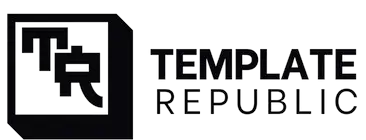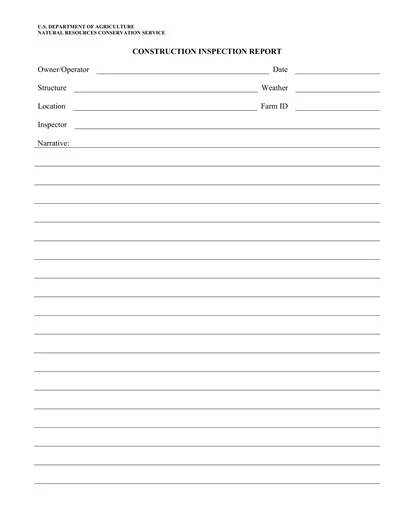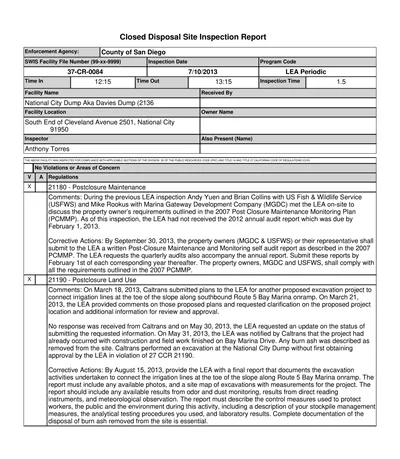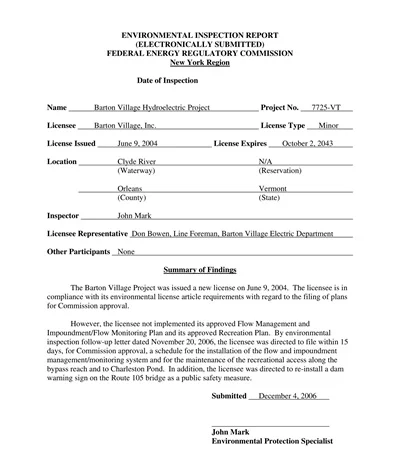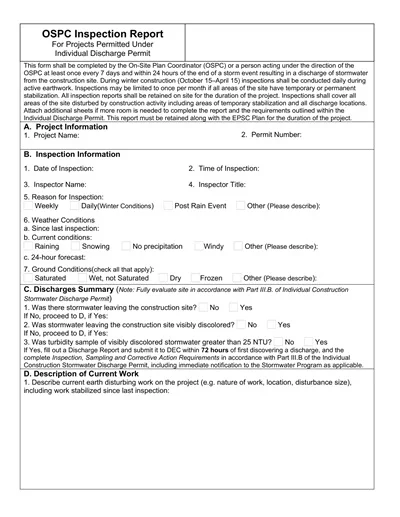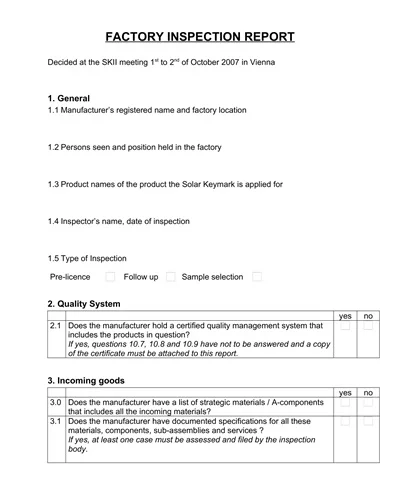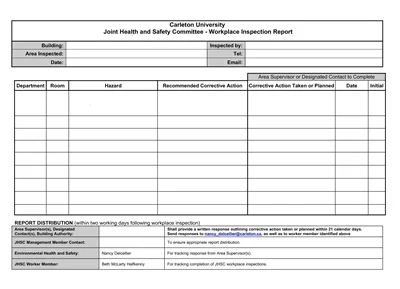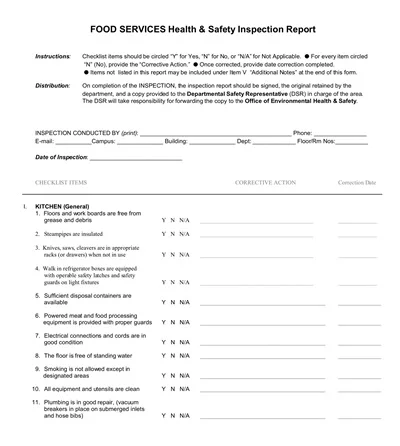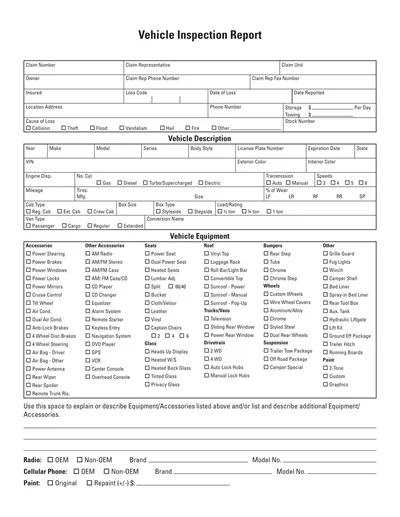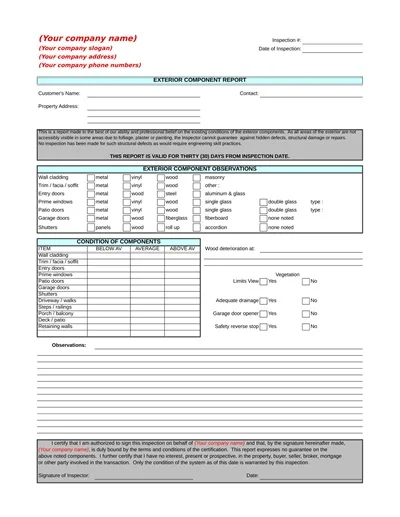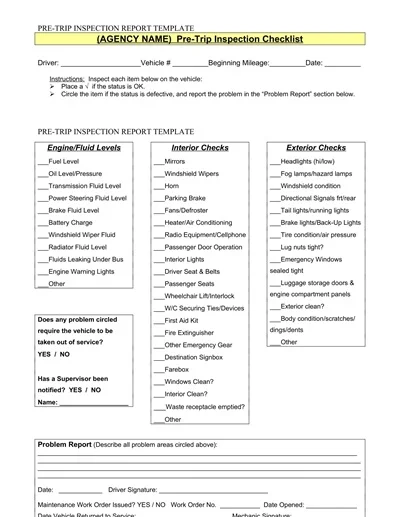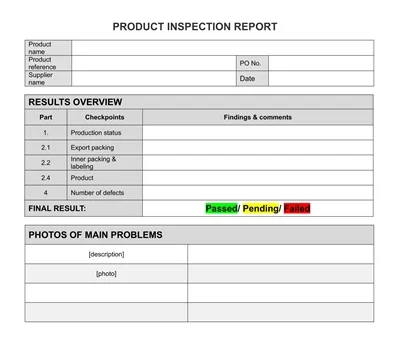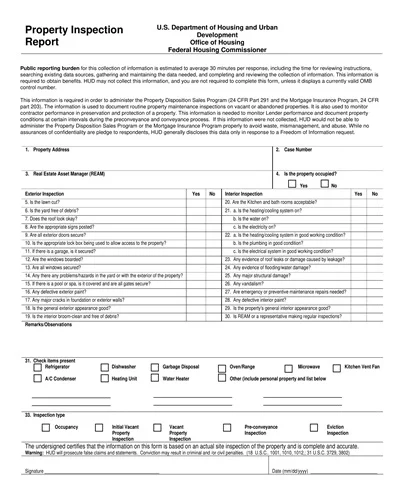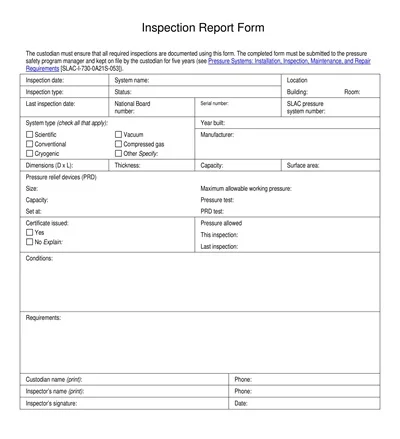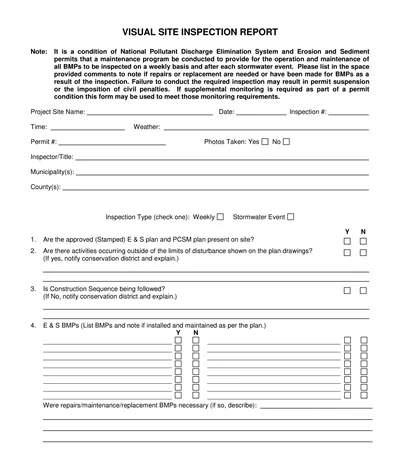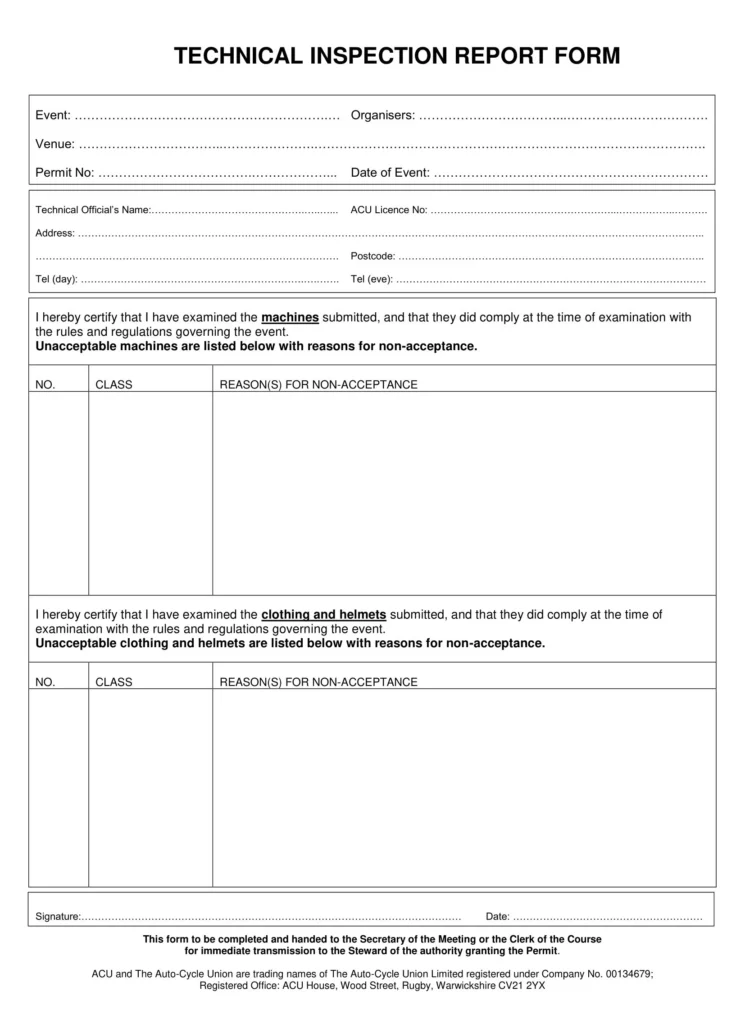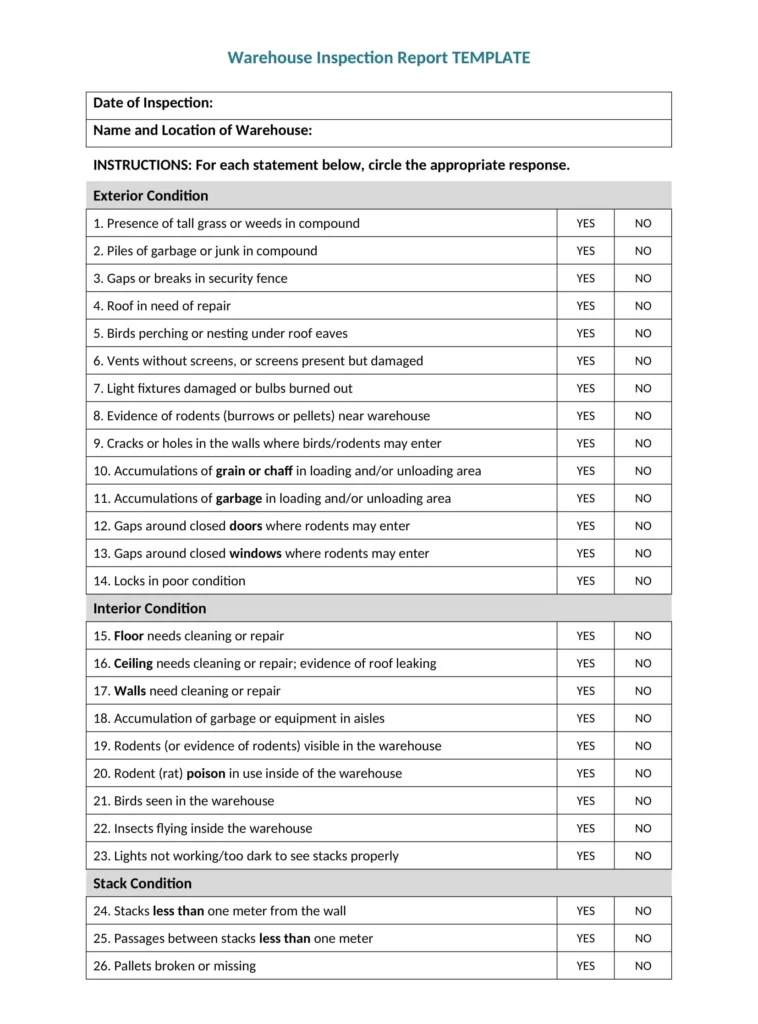32+ Free Inspection Report Templates – PDF, Word
An Inspection Report Template is a standardized document used by inspectors across various industries to record findings from an inspection process. It outlines a comprehensive checklist of criteria, benchmarks, and observations necessary to assess conditions, compliance with regulations, or quality standards of products, facilities, or systems under scrutiny.
Table of Contents
The template typically includes sections for general information, specific inspection items, inspector comments, ratings or scores, and recommendations for improvements or corrective actions. Its structured format ensures consistency and thorough reporting, facilitating more accessible analysis and decision-making based on the inspected elements.
Download Free Inspection Report Templates
What is an Inspection Report?
An inspection report is a formal document outlining the condition of a property, product, or system following a comprehensive evaluation by a qualified inspector. Typically used in real estate transactions, manufacturing quality control, and safety assessments, these reports detail the inspector’s observations and any defects or areas of concern and may include recommendations for repairs or further investigations.
The purpose of an inspection report is to provide an informed, unbiased assessment to help parties make decisions, ensure compliance with standards, and maintain or enhance safety and quality.
What are the four major components of an Inspection Report?
The four major components of an Inspection Report include:
- Introduction: This section sets the context for the inspection, providing details such as the purpose, scope, and methodology. It also contains information about the inspection’s date, time, location, along with the inspector(s) identification.
- Observations: Here, the inspector details the findings of the inspection. This part includes descriptions of any discrepancies, defects, or areas of concern noted during the inspection. Photographs and references to relevant standards or codes often accompany these observations to provide clarity.
- Analysis: The analysis section interprets the observations, evaluating the severity of the findings and their potential impact on safety, functionality, or compliance. This part may include prioritization of issues based on their urgency or importance.
- Recommendations: Based on the observations and analysis, this section outlines the suggested actions or corrective measures to address the identified issues. Recommendations are often ranked or categorized by priority and may include timelines for implementation or review.
Types of Inspection Reports
Types of Inspection Reports vary significantly depending on the industry, the specific processes, and the objectives behind conducting the inspections. Below are some prominent types of inspection reports commonly utilized across various sectors:
1. Quality Inspection Reports
These reports focus on assessing the quality of products or services. They detail whether the items inspected meet the predefined standards and specifications. Quality inspection reports may include measurements, defects identified, and improvement recommendations.
2. Safety Inspection Reports
Aimed at identifying potential hazards, safety inspection reports are crucial for ensuring that workplaces comply with health and safety regulations. These reports document equipment conditions, workspaces, and practices, highlighting risks and suggesting corrective actions.
3. Home Inspection Reports
In the real estate industry, home inspection reports provide a comprehensive overview of the condition of a property. Inspectors evaluate structural integrity, electrical systems, plumbing, HVAC, and other critical components to inform potential buyers or current homeowners.
4. Environmental Inspection Reports
These reports assess compliance with environmental regulations and the impact of certain activities on the environment. They might include emissions monitoring, waste management practices, and using natural resources.
5. Financial Audit Reports
Although not traditionally termed ” inspection, ” financial audits involve a systematic review of a company’s financial statements and transactions. The resulting report provides an opinion on whether the financial statements are free from material misstatement and are presented relatively by the applicable financial reporting framework.
How to Write an Inspection Report
Writing an inspection report requires attention to detail, explicit language, and a structured format. Here’s how to craft an effective inspection report:
- Start with an Overview: Begin your report with a brief overview that includes the date of the inspection, the purpose, and the overall condition of the item or property inspected.
- Inspector Details: Include the inspector’s name, contact information, and qualifications. This establishes credibility and allows for follow-up if needed.
- Detailed Observations: Use bullet points to list detailed observations from the inspection. Structure these points logically, often moving from general to specific or room by room in a property inspection.
- Conditions of each area or item
- Any defects or malfunctions
- Potential safety hazards
- Photographic Evidence: Attach photos to support your observations. Each image should have a caption or a reference in the report explaining its relevance.
- Recommendations: Provide clear, actionable recommendations for each issue identified. Indicate whether it’s a necessary repair, a recommended improvement, or an observation for monitoring.
- Summary: Conclude with an overview that encapsulates the report’s key points, including any urgent issues or overall assessment.
- Appendices: If necessary, include appendices for in-depth technical details, additional photos, or referenced documents.
Writing an inspection report with these details in mind ensures clarity, comprehensiveness, and utility for the report’s recipients.
Importance of Inspection Reports
Inspection reports are pivotal in various industries and critical for ensuring safety, compliance, and quality control. They formally assess a product’s, process’s, or property’s condition, identifying potential issues that could lead to significant risks if not addressed. For businesses, these reports are essential for making informed decisions about repairs, maintenance, and investments.
They also help adhere to regulatory standards, thus avoiding legal complications and fines. For individuals, especially in real estate transactions, inspection reports offer insights into the condition of a property, guiding purchasing decisions and negotiations. Ultimately, these documents contribute to safeguarding assets, ensuring workplace safety, and maintaining high service and product quality standards.
How to Create an Inspection Report Template
Creating an inspection report template involves several detailed steps to ensure it is comprehensive and valuable for various inspection types.
Here’s a guide to help set up an effective template:
Step 1: Define the Purpose of the Inspection
- Identify the specific type of inspection (safety, quality, compliance, etc.).
- Determine the scope of the inspection.
Step 2: Choose a Format
- Decide between a digital or paper format based on accessibility and user preference.
- Consider using software that allows for easy template customization.
Step 3: List Essential Components
- Header Section: Should include fields for the inspector’s name, inspection date, and location/site being inspected.
- Introduction: Brief description of the inspection’s objectives.
- Body: Structured into categories relevant to the inspection type, like safety protocols, equipment conditions, or compliance standards.
- Use checkboxes for items that require a simple pass/fail response.
- Include short answer fields for more detailed observations.
- Summary: Space for overall assessment and recommendations.
- Action Items: List required follow-up actions, responsible parties, and deadlines.
Step 4: Design for Clarity
- Use clear, concise language that is understandable by all intended readers.
- Apply consistent formatting (font size, headers, numbering) to facilitate easy navigation.
Step 5: Include Visual Aids
- Integrate sections for photos or diagrams, especially for documenting issues that need visual evidence.
Step 6: Test and Refine
- Pilot the template on honest inspections to gather feedback on its effectiveness and user-friendliness.
- Make necessary adjustments before finalizing for broader use.
By following these steps, you can create an inspection report template that is functional and adaptable to various inspection needs.
